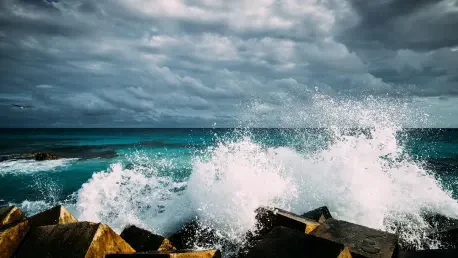With a deep background in energy management and renewable energy, Christopher Hailstone is no stranger to the innovations that drive electricity delivery today. As an expert on grid reliability and security, he offers unique insights into the evolving landscape of renewable energy technologies. We’re diving into the promising world of wave energy, focusing on CorPower Ocean’s advancements and the implications of their recent strategic investments.
Can you explain what wave energy is and how it fits into the current renewable energy landscape?
Wave energy is the process of capturing energy produced by ocean waves and converting it into electricity. It represents a sustainable source of power that, like other renewables, aims to reduce our dependence on fossil fuels. What sets wave energy apart in the renewable landscape is its consistent output, as ocean waves are more dependable than solar or wind alone. This consistency makes wave energy a crucial player in creating a balanced and reliable renewable energy mix.
What makes CorPower Ocean’s wave energy technology unique compared to other renewable sources?
CorPower Ocean has developed a technology known as the CorPack wave arrays, which efficiently harnesses the energy from ocean waves. The uniqueness of their approach lies in their ability to fit seamlessly with existing renewable technologies like wind and solar. This combination allows for a more stable energy output by filling the gaps when the sun isn’t shining or the wind isn’t blowing, which is a significant challenge with renewable energy systems that rely heavily on those sources alone.
What were the key factors that attracted Tokyo Gas and GTT Group to invest in CorPower Ocean?
Tokyo Gas and GTT Group were drawn to CorPower Ocean because of its innovative technology and the strategic role wave energy can play in achieving energy security and decarbonization goals. Tokyo Gas is looking toward the future of energy solutions that are both sustainable and scalable, while GTT Group sees a complementary technology that aligns with their expertise in cryogenic technologies. Both companies recognize the importance of wave energy in achieving a balanced, clean energy portfolio, and their investment is a testament to the potential they see in this technology.
How do you plan to leverage the engineering and industrial expertise of Tokyo Gas and GTT Group?
The partnership with Tokyo Gas and GTT Group is immensely beneficial because they bring considerable industrial and engineering prowess to the table. We plan to collaborate closely to refine the technology and bring it to commercial scale more quickly and efficiently. Their expertise in areas like energy systems and liquefied gas transport provides valuable perspectives that can enhance our technology’s deployment and integration, ensuring we maximize the potential of wave energy.
What are the main challenges CorPower Ocean faces in scaling up wave energy technology?
Scaling wave energy technology presents several challenges, primary among them being the initial cost and the logistical hurdles associated with deploying large-scale installations in the ocean. Furthermore, integrating this new technology with existing energy infrastructures requires careful planning and significant investment. Meeting these challenges head-on involves continuous innovation and strategic partnerships, such as those with Tokyo Gas and GTT Group, to share knowledge and resources.
How does the integration of wave energy with offshore wind and solar installations create 24/7 clean power?
By integrating wave energy with wind and solar, we can achieve a more constant and reliable energy supply. Wind and solar are intermittent sources that depend on weather and daylight conditions, which often means they alone can’t provide a steady power output. Wave energy, however, is much more consistent, operating even when the wind is still or the sky is overcast. This integration allows for a balanced energy mix that ensures a continuous supply of clean power, effectively enabling round-the-clock renewable energy availability.
Can you discuss the potential benefits of co-locating CorPack wave arrays with existing renewable installations?
Co-locating wave arrays with existing wind and solar sites is advantageous because it optimizes the use of already available resources and infrastructure. This kind of strategic positioning minimizes additional land and sea space requirements, reduces the need for further grid infrastructure, and enhances the overall efficiency and stability of the power supply. Such integrated sites can also share maintenance resources and reduce costs, making renewables more economically viable.
How does CorPower Ocean’s technology help stabilize energy output compared to purely solar or wind-based systems?
CorPower Ocean’s technology adds a layer of reliability due to the consistent nature of wave activity. While fluctuations in wind and sunlight can lead to variable power output, waves tend to maintain their presence regardless of time of day or weather changes, offering a dependable power source. By stabilizing the energy supply, our technology reduces the need for extensive energy storage solutions, which can be cost-prohibitive in solely solar or wind-based systems.
What role does wave energy play in achieving global energy security and reducing dependency on fossil fuels?
Wave energy has the potential to contribute significantly to energy security by providing an abundant and renewable energy source that is geographically widespread across the globe. As we harness this energy effectively, it allows countries to diversify their energy mixes, relying less on imports of fossil fuels and enhancing their energy independence. The more we integrate wave energy into the global energy portfolio, the more we can reduce our carbon footprint and move towards a sustainable energy future.
How do you foresee wave energy impacting the cost efficiency of renewable energy systems?
Wave energy can significantly impact cost efficiency by complementing and stabilizing other renewable sources. It reduces the need for expensive energy storage solutions and minimizes the necessity for additional grid infrastructure. As more efficient technologies are developed and economies of scale are achieved through increased deployment, the overall costs of renewable energy systems are likely to decrease, making them more accessible and practical for broad usage.
What does the Series B funding round mean for CorPower Ocean’s future growth and development?
The Series B funding is a crucial step toward accelerating the commercial deployment of our technology. It provides the necessary capital to expand our operations, invest in R&D, and scale up production. This funding allows us to not only advance our technology but also to forge strategic partnerships and enter new markets. It signals confidence from major industry players and paves the way for CorPower Ocean to make a significant impact in the renewable energy sector.
Could you elaborate on the statement that a clean energy mix including wave energy requires less installed capacity and grid infrastructure?
When wave energy is included in a clean energy mix, it reduces the overall demand for installed capacity because it provides a steady and reliable supply of energy, unlike the fluctuating outputs of solar and wind. This reliability decreases the dependency on storage solutions and means less grid infrastructure is required to accommodate fluctuating energy levels, leading to lower costs and a more efficient deployment of resources.
How important is it for CorPower Ocean to have strategic investors like Acario and GTT Group?
Strategic investors like Acario and GTT Group are vital because they do more than provide financial resources—they bring expertise, networks, and industrial insights that can be leveraged to overcome challenges and drive innovation. Their involvement signals strong market support and enhances our ability to successfully launch our technology on a commercial scale. These partnerships are instrumental in positioning wave energy as a mainstream, reliable renewable resource.
What are the long-term goals and vision for CorPower Ocean in the renewable energy sector?
Our long-term vision is to position wave energy as a cornerstone of the global renewable energy mix. We aim to expand our reach across the globe, providing clean and reliable wave-powered electricity to diverse regions, particularly those with limited access to other forms of renewable energy. We also strive to continuously innovate and improve our technology to maximize efficiency and depth of integration with other renewable energy systems.
How does CorPower Ocean evaluate the potential locations for deploying its wave energy technology?
We carefully assess potential deployment locations by examining factors such as wave energy potential, proximity to existing grid infrastructures, and environmental impacts. We also consider socio-economic factors, such as the local energy demand and the regulatory environment, to ensure our technology will be viable and beneficial to the communities it serves. This comprehensive evaluation ensures that our deployments are both effective and sustainable.
What advancements or innovations is CorPower Ocean working on to improve wave energy technology?
We’re focusing on advancements that enhance efficiency and reduce costs, such as developing more robust materials and components that can withstand harsh marine conditions. We’re also innovating on the control systems for our technology to increase energy capture and improve predictability. Furthermore, we’re exploring synergies with other technologies to ensure seamless integration with solar and wind systems, strengthening the role of wave energy in the renewable sector.
Do you have any advice for our readers?
Stay informed and open to new energy solutions. The landscape of renewable energy is rapidly evolving, and emerging technologies like wave energy can contribute significantly to a sustainable future. Being proactive in understanding and advocating for these technologies can drive their adoption and help us achieve our collective sustainability goals.









